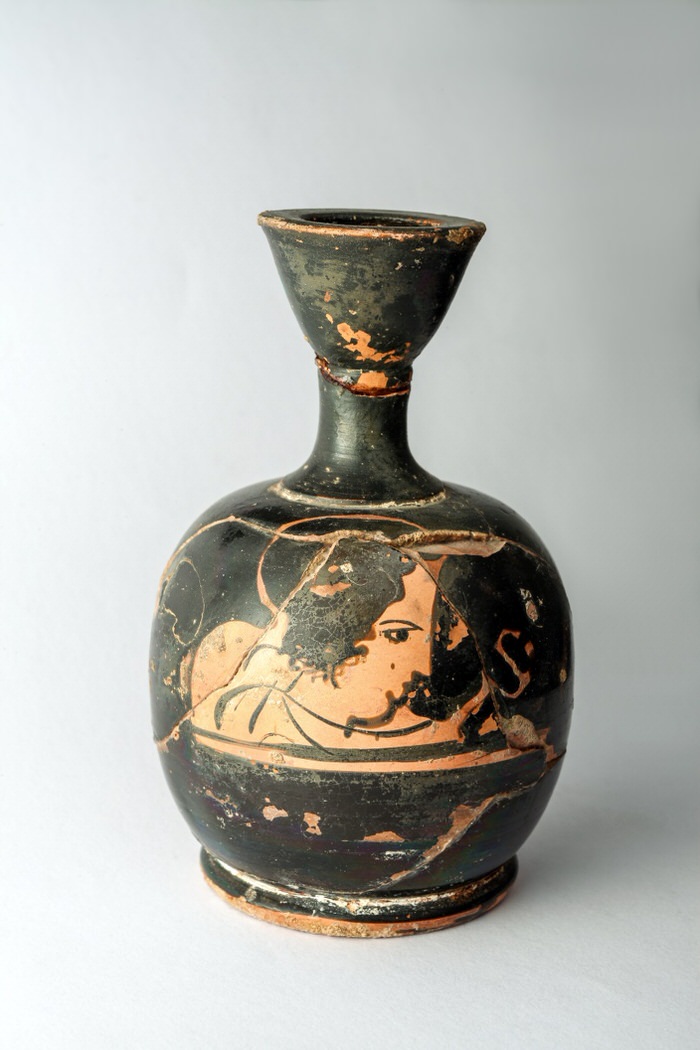Lekythos
The Lekythos (fig. 1) was found in a tomb which cannot be precisely identified, in the Phoenician-Punic necropolis of Sulky. This type of vessel is called by specialists “Squat (Aryballos) Lekythos”, as it is similar to the globular body of the Aryballos, another vascular form of Greek origin, which can be dated between the late sixth and fifth centuries B.C.


This example, in black paint with red figures, was found in fragments and then reassembled for the most part, leaving a wide gap in the body (fig. 3). The vessel has a narrow neck and a mouth like a funnel; the body is globular with the image of the profile of a woman's face, looking to the right.

This is a widespread shape in the Phoenician-Punic world and it falls within the framework of the trade between east Phoenicians and Greeks from the early moments of the Phoenician expansion in the West (IX-VIII century B.C.) where, among the various products, the fine tableware which this particular type of vase belongs to, was in circulation. The Lekythos from the first half of the sixth century B.C. has a globular shape (like the specimen from Sulky) i.e. tends to a spherical form, like a globe, or an ovoid one (fig. 4). The so-called standard shape will develop from these around the end of the sixth century B.C. (fig. 5).


What was the Lekythos used for? It was used as an ointment-holder, therefore it was used to hold oils and fragrant ointments, particularly for funerary rituals, and its cylindrical shape and narrow neck, with the funnel opening, was functional to this use.
Bibliografia
- R. D’ORIANO, A. SANCIU, La sezione Fenicio-Punica del Museo “G. A, Sanna” di Sassari, Piedimonte Matese 2000 .
- E. PARIBENI, “Lekythos” in Enciclopedia dell’Arte Antica Online, http://www.treccani.it/enciclopedia/lekythos_%28Enciclopedia-dell%27-Arte-Antica%29/
- A. UNALI, Sulky: la ceramica attica a vernice nera in M. MILANESE, P. RUGGERI, C. VISMARA (a cura di), Atti del XVIII Convegno Africa Romana (Olbia, 11-14 dicembre 2008), Roma 2010, pp. 1227-1240.

 VR
VR